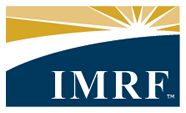Economic Growth and Tax Relief Reconciliation Act (EGTRRA) Summary
January 25, 2002
Executive Summary
The Economic Growth and Tax Relief Reconciliation Act (EGTRRA) of 2001 (Public Law 107-16) was signed into law on June 7, 2001. Unless otherwise indicated, the provisions took effect on January 1, 2002. This memo outlines the features of EGTRRA.
Purchasing IMRF service with tax-deferred assets from a defined contribution plan
If a member has IMRF service credit he or she is eligible to purchase, under EGTRRA provisions the member may use assets from deferred compensation plans, such as 457 or 403(b) plans, to purchase the service credit. However, the member’s deferred compensation providers may or may not allow active participants to access funds for the purchase of service credit. Members must contact their employer and provider in order to see if this option is available under their plan.
IMRF members who receive a distribution from a 457 or 403(b) plan can roll over these assets into IMRF to purchase one of the types of allowable service credit. If an IMRF member who is actively participating in IMRF receives a distribution from another defined benefit plan as a surviving spouse, that member can also roll over that distribution into IMRF if he or she is eligible to purchase one of the types of allowable service credit.
The following is a list of allowable service credit a member may be eligible to purchase:
- ERI service
- Prior service
- ECO service
- SLEP service
- Military service
- Omitted service Assembly
- Retroactive service
- Out-of-state service
- Reinstated service (paying back a refund)
- Benefit Protection Leave service (leave of absence)
- Elected Official Service for Members of the General
Rolling over IMRF refunds
The taxable portion of an IMRF refund can now be rolled over into a 403(b) or 457 plan. All of an IMRF refund (including any after tax contributions) can be rolled over into an IRA.
Increased Benefit and Compensation Limits
The maximum annual benefit a member of IMRF can receive is increased from $140,000 to $160,000. This amount will be increased in coordination with the index for inflation in $5,000 increments. The maximum amount of compensation that can be used to determine a benefit is increased from $170,000 to $200,000. This amount will be increased in coordination with the index for inflation in $5,000 increments.
Increased Contributions to Defined Contribution plans
The maximum contribution that can be made to a Defined Contribution plan is increased from $10,500 for a 403(b), $8,500 for a 457, to $11,000 for both plans in 2002. This amount is increased by $1,000 each year until 2007. In 2007 the amount will be increased in coordination with the index for inflation in $500 increments.
Participants who are 50 years old and who contribute to a 457 or 403(b) plan are allowed to make “catch up” contributions. Participants can make an additional $1,000 contribution in 2002. This amount is increased $1,000 until 2006 when the catch up will allow a $5,000 contribution. The amount is then increased in coordination with the index for inflation in $500 increments. Participants in a 457 plan are allowed to contribute twice the regular contribution amount allowable in the final three years before the 457 plan’s normal retirement age.
The law is scheduled to expire after December 31, 2010. Congress must act before the expiration date in order for these changes to remain in place.
Questions
If you have any questions, please call IMRF Legislative Liaison Bonnie Shadid at 630-368-5354.

